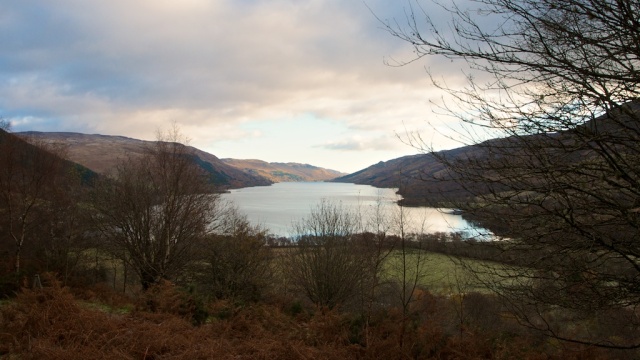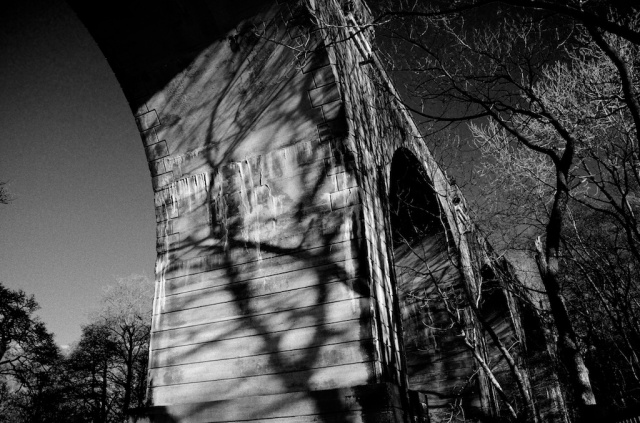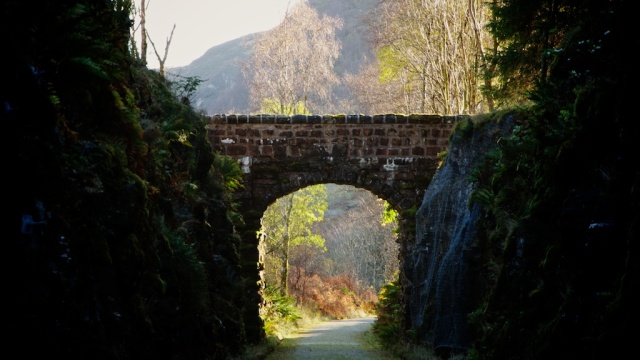
National Parks on one level are there to conserve these wild landscapes, not just to protect them from being wiped out and for ecological reasons, but also so that people can experience this perceived wildness. Long before the National Parks were established these areas were attracting tourists as an escape from the industrialised cities. It kind of started with travelers publishing journals of their trips – Boswell and Johnson in the 1770’s, Coleridge, Wordsworth and Ruskin in the early 19th C and Queen Victoria’s visit in the mid 19th C being the main drivers in this park. The latter group came to the Trossachs as an extension to their experiences in the English Lake District and the development of tourism there. The 19th Century also, crucially, brought the railways and with it mass tourism from the surrounding cities.
In the 1870’s a railway was built from Callander, up through the pass of Leny, Glen Ogle, Glen Dochart, Crianlarich and on up to Oban. At its peak there were several trains a day of up to 20 carriages long making the journey through most spectacular landscapes. When it was built the view above Lochearnhead was thought to be the best view from a carriage window in the UK (this is before they built the West Highland line!). Glen Ogle was a highpoint for the line – both visually and physically – with the railway built up high into the side of the Glen. The station at Glenoglehead was a substantial affair despite there not being any local village to use it, but built especially for visitors to go off walking the ‘wild’ hills. The railway companies published a range of maps and booklets on walks from the station. It would be good to see if I can track down some.
The line as far as Crianlarlich closed in the Beeching cuts in the ’60’s – the line up Glen Ogle closed early due to one of its frequent rockfalls on the line. However, more recently the trackbed has been reopened as part of the national cycle network.
The 12 arched Glen Ogle viaduct is a major point on the route – a vast and ambitious stone structure on a slight sweeping curve clinging to the hillside. I walked across it last week in a howling gale – the wind whistling through everything. As I walked across the viaduct the wind made the metal handrails sing – each section was a different pitch and created a stereo haunting soundscape of changing tones along the length. Like the ghosts of all those steam engines labouring up the incessant gradient. I wondered if it was possible to recreate that experience for non-windy days or even what that Glen sounded like with the railway – I wonder where I can borrow a whistle from a Stanier ‘Black 5’ engine? From the late 30’s until the close of the line, they were the main engine used to tackle the steep gradients of the line and have a very distinctive whistle tone – known as ‘hooters’. It’s the kind of auditory memory I’m sure many local people will instantly recognise – stirring something from way back in time. I spoke to a guy in Callander last week who told me he remembers seeing the last train up the valley – it was leaving the station and there wasn’t going be another coming back. The brass band came out for the occasion and they set off fog detonators all along the line as it left, the explosions rattling around the hills. There’s also a story that when they took up all the track the rails were shipped off to Mexico City for their Metro for their Olympics. It’s a great story.
I also got to thinking about other things to explore on that section. There’s a short, deep cutting north of the viaduct, which from the south you enter through an arched bridge. The scale and volume of the cutting has a very cathedral-like quality. Something else for me to ponder over. At this time of year the west side of the Glen (with the viaduct) gets no direct sunlight. Due to the size of the surrounding mountains most of the Glens have very little or no direct sun now until April. I’m wondering how to illuminate just the viaduct with sunlight? Picking it out as an architectural feature in the ‘wild’ landscape. It’s an idea which seems to be capturing peoples’ imagination locally, so I might have to investigate that further…







